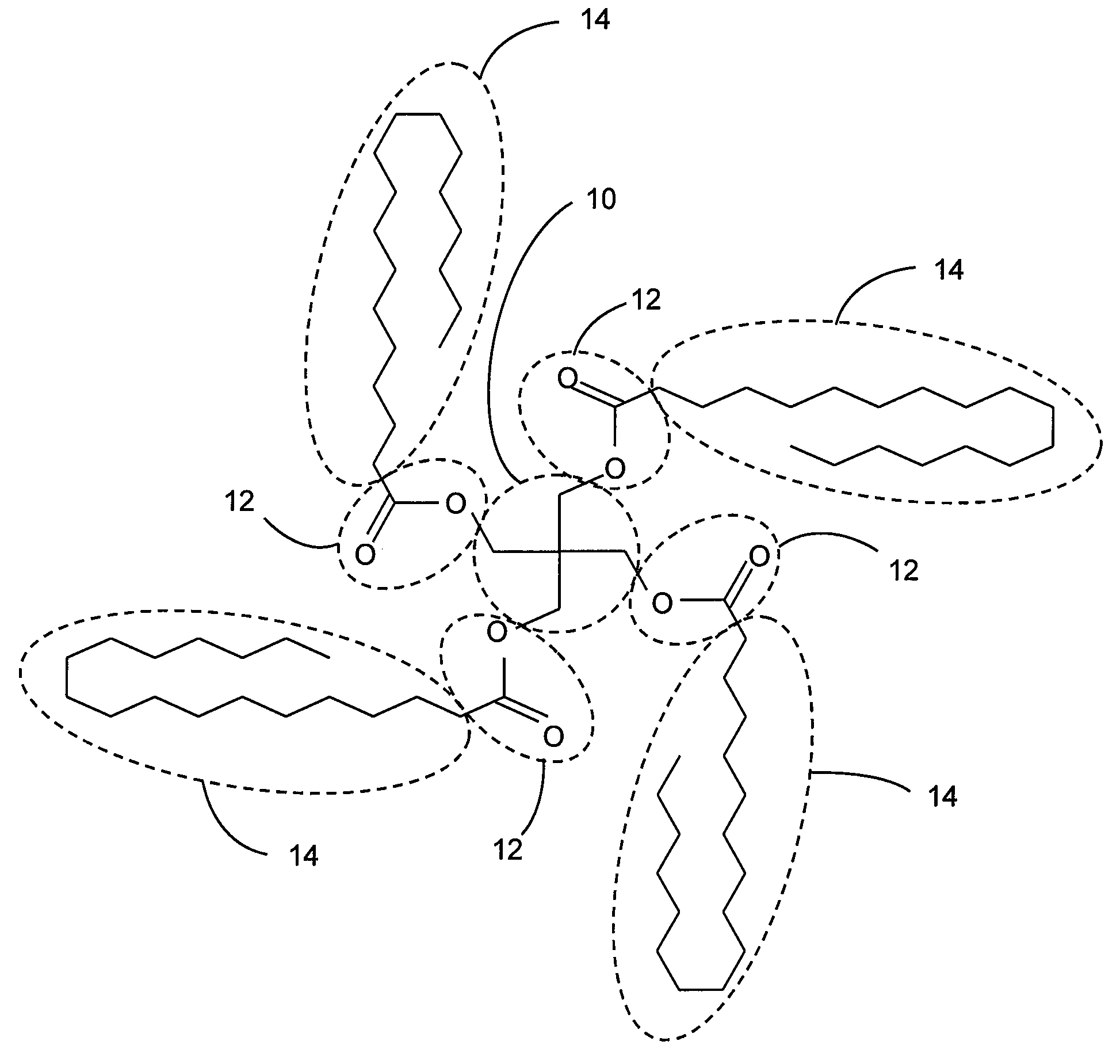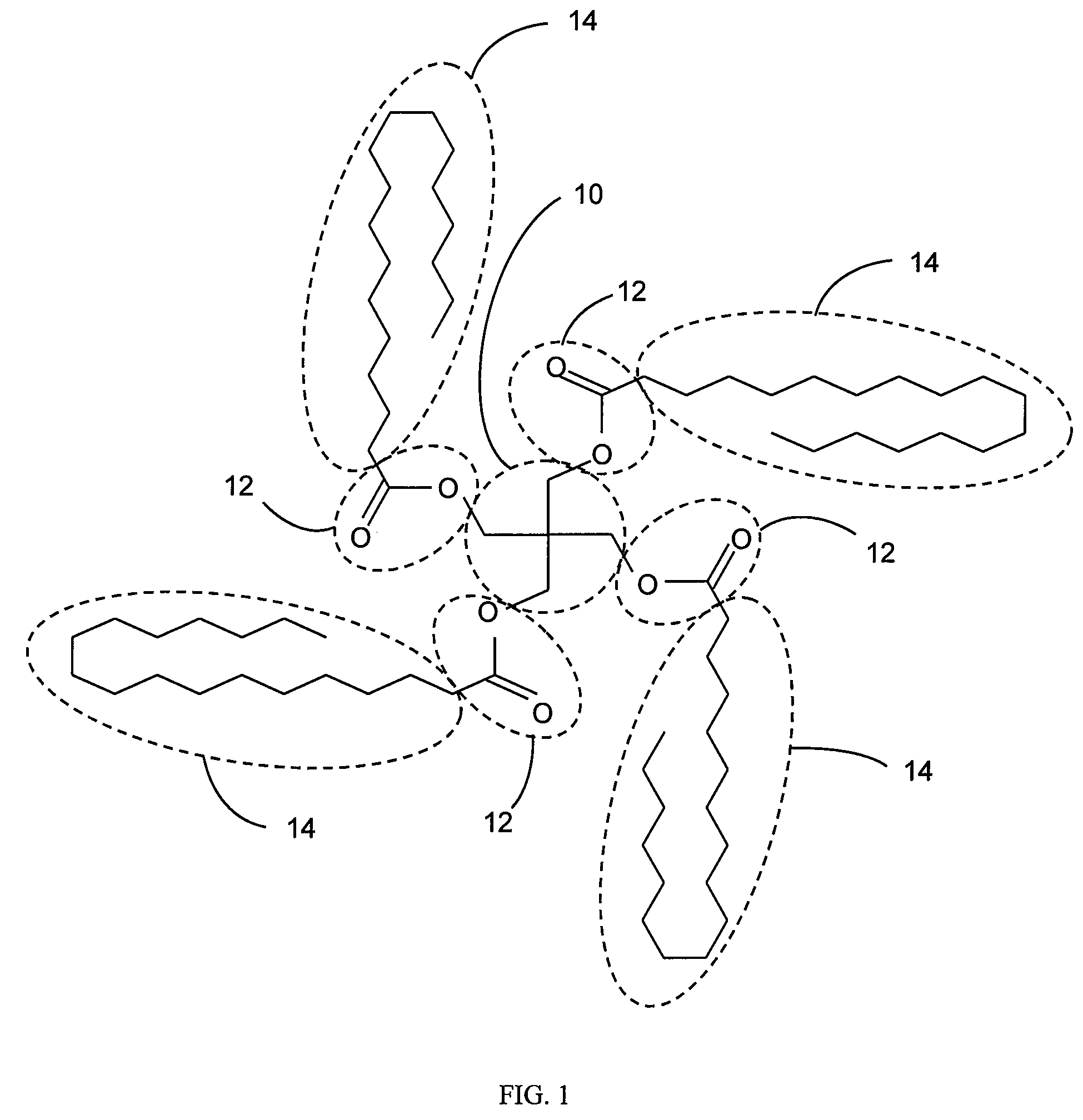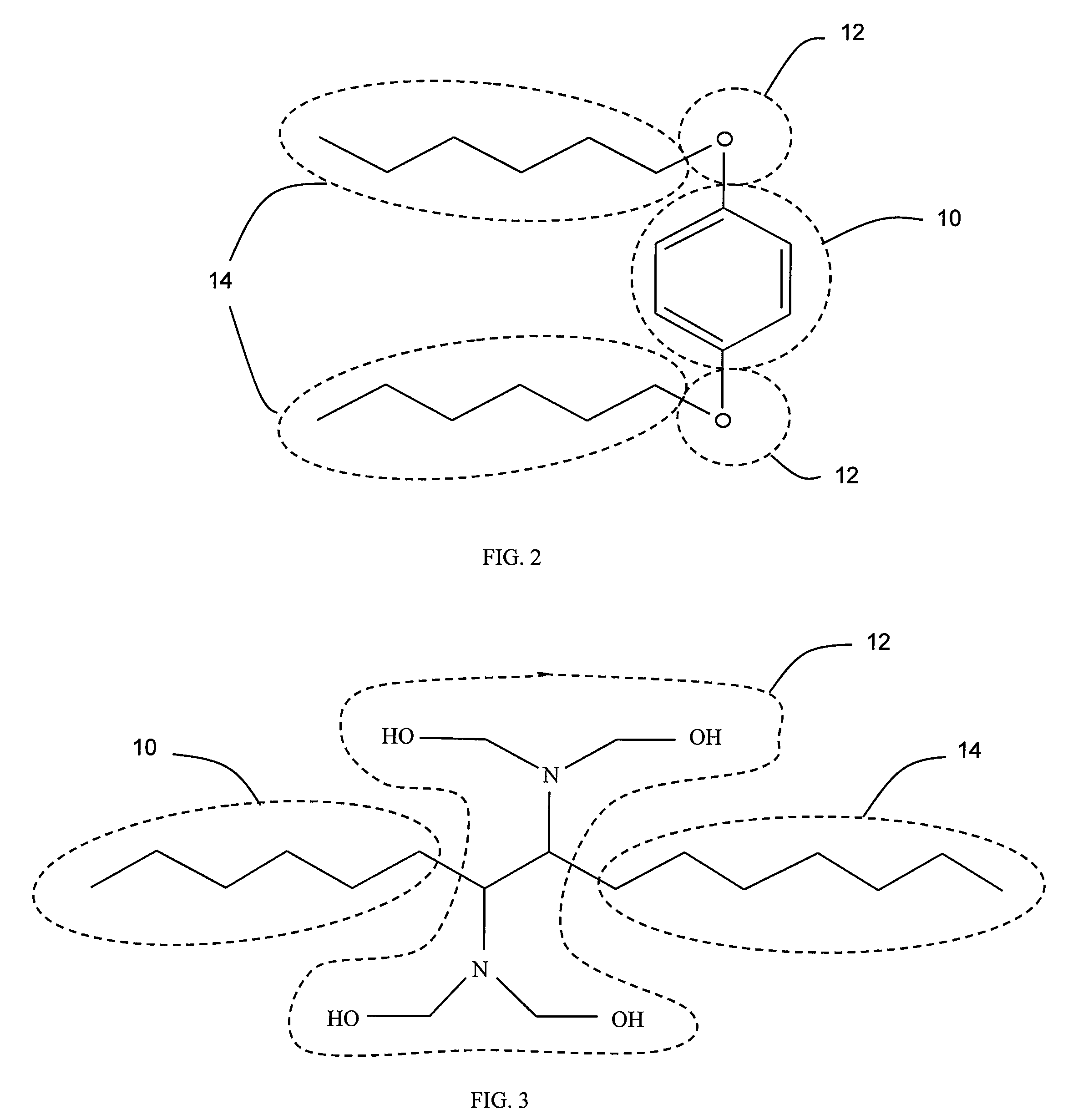Suspension Characteristics in Invert Emulsions
a technology of invert emulsion and suspension, which is applied in the direction of wellbore/well accessories, earth drilling and mining, chemistry apparatus and processes, etc., can solve the problems of loss of circulation, poor low-shear viscosity and yield point, and difficulty in adjusting the emulsion temperature, etc., to achieve adequate low-shear yield point, good low-shear viscosity and yield point, and good low-shear visco
- Summary
- Abstract
- Description
- Claims
- Application Information
AI Technical Summary
Benefits of technology
Problems solved by technology
Method used
Image
Examples
example 1
Four invert emulsions having a density of about 9.0 pounds per gallon (“ppg”) and an oil to water ratio (“OWR”) of about 60:40 were formulated as indicated below in Table 1. The first formulation comprises base oil without any of the polar hydrophobic additives of the present invention. The next three formulations contain increasing amounts of pentaerythritol tetrastearate (“PE-TS”), a polar hydrophobe, in pounds per barrel (ppb) to demonstrate the effects of the polar hydrophobic additives of the present invention.
TABLE 1Formulations of 9 ppg Invert Emulsion Fluids Using PE-TS234Time to mix1(3 ppb PE-(6 ppb PE-(9 ppb PE-Formulation(min)(Base Mud)TS)TS)TS)OWR60:4060:4060:4060:40ESCAID 110 (bbl)0.510.500.490.48EZ MUL NT (ppb)28.008.008.008.00Lime (ppb)23.003.003.003.00RHEMOD ™ L (ppb)23.003.003.003.00ADAPTA (ppb)51.501.501.501.50PE-TS (ppb)5—3.006.009.00CaCl2 soln, ppb (200K2161.07161.07161.07161.07WPS)TAU-MOD (ppb)55.005.005.005.00Rev Dust (ppb)520.0020.0020.0020.00BAROID (ppb)1028....
example 2
Four invert emulsions having a density of about 8.5 pounds per gallon (“ppg”) and an oil to water ratio (“OWR”) of about 60:40 were formulated as indicated below in Table 3. The first formulation comprises a base oil without any of the polar hydrophobic additives of the present invention. The next three formulations contain increasing amount of pentaerythritol tetrastearate (“PE-TS”), a polar hydrophobe, to demonstrate the effects of the polar hydrophobic additives of the present invention.
TABLE 3Formulations of 8.5 ppg Invert Emulsion Fluids Using PE-TS678Time5(3 ppb PE-(6 ppb PE-(9 ppb PE-Formulation(min)(Base Mud)TS)TS)TS)OWR60:4060:4060:4060:40ESCAID 110 (bbl)0.53 (146.72 g)0.52 (143.72 g)0.51 (140.72 g)0.50 (137.72 g)EZ MUL NT (ppb)27.007.007.007.00Lime (ppb)23.003.003.003.00RHEMOD ™ L (ppb)23.003.003.003.00ADAPTA (ppb)51.501.501.501.50PE-TS (ppb)5—3.006.009.00CaCl2 soln, ppb2164.37164.37164.37164.37(200K WPS)TAU-MOD (ppb)55.005.005.005.00Rev Dust (ppb)520.0020.0020.0020.00BARA...
example 3
Four invert emulsions having a density of about 9.0 pounds per gallon (“ppg”) and an oil to water ratio (“OWR”) of about 60:40 were formulated as indicated below in Table 5. The first formulation comprised linear paraffin base oil (Baroid Alkane™ available from Halliburton Energy Services, Inc. of Houston, Tex.) without any of the polar hydrophobic additives of the present invention. The next three formulations contained the same base components with various polar hydrophobes including pentaerythritol tetrastearate (“PE-TS”), trimethylol propane trioleate (TMP), and pentaerythritol tetraoleate (PE-TO), respectively. The formulations demonstrate the effects of the polar hydrophobic additives of the present invention in a linear paraffin base oil.
TABLE 5Formulations of 9 ppg Invert EmulsionFluids Using Linear Paraffin Base Oil12131415Time(Base(9 ppb(9 ppb(9 ppbFormulation(min)Mud)PE-TS)TMP)PE-TO)OWR60:4060:4060:4060:40Baroid Alkane (bbl)0.510.480.480.48EZ MUL NT (ppb)28.008.008.008.00...
PUM
 Login to View More
Login to View More Abstract
Description
Claims
Application Information
 Login to View More
Login to View More - R&D
- Intellectual Property
- Life Sciences
- Materials
- Tech Scout
- Unparalleled Data Quality
- Higher Quality Content
- 60% Fewer Hallucinations
Browse by: Latest US Patents, China's latest patents, Technical Efficacy Thesaurus, Application Domain, Technology Topic, Popular Technical Reports.
© 2025 PatSnap. All rights reserved.Legal|Privacy policy|Modern Slavery Act Transparency Statement|Sitemap|About US| Contact US: help@patsnap.com



